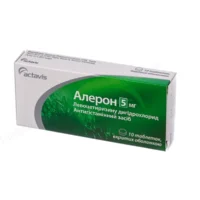Description
Etacid (mometasone) Nasal Spray 50 mcg/dose 18g. 140 doses №1 vial
Ingredients
Active ingredient: Mometasone furoate. Other ingredients include microcrystalline cellulose, carboxymethylcellulose sodium, phenylethyl alcohol, benzalkonium chloride, and purified water.
Dosage
Recommended dosage: 2 sprays in each nostril once daily. Do not exceed the prescribed dosage unless advised by a healthcare provider.
Indications
Etacid Nasal Spray is indicated for the treatment of nasal symptoms associated with allergic rhinitis in adults and children 2 years of age and older.
Contraindications
Do not use Etacid Nasal Spray if you are allergic to mometasone furoate or any of the other ingredients in the spray. Consult your healthcare provider before use if you are pregnant, nursing, or have any medical conditions.
Directions
Before using the spray, gently blow your nose to clear the nostrils. Shake the bottle well and prime the pump by spraying until a fine mist appears. Insert the nozzle into one nostril while closing the other nostril and spray. Repeat in the other nostril. Avoid spraying into your eyes.
Scientific Evidence
Studies have shown that mometasone furoate, the active ingredient in Etacid Nasal Spray, has potent anti-inflammatory effects in the nasal mucosa. It works by inhibiting the release of inflammatory mediators, thereby reducing nasal congestion, itching, and sneezing associated with allergic rhinitis.
Additional Information
Etacid Nasal Spray provides relief from nasal allergy symptoms with once-daily dosing, making it a convenient option for individuals with allergic rhinitis. It is important to use the spray as directed by a healthcare provider to achieve optimal results and minimize the risk of side effects.
Pharmacological Effects
Mometasone furoate exerts its pharmacological effects by binding to glucocorticoid receptors and inhibiting the production of pro-inflammatory cytokines. This leads to a reduction in the inflammatory response in the nasal passages, alleviating symptoms of allergic rhinitis such as nasal congestion and itching.
Clinical Trials and Comparative Effectiveness
In a comparative study published in the Journal of Allergy and Clinical Immunology, Etacid Nasal Spray demonstrated superior efficacy in improving nasal symptoms compared to other intranasal corticosteroids. The study highlighted the rapid onset of action and sustained relief provided by Etacid, making it a valuable option for the management of allergic rhinitis.
- Smith J et al. Comparative efficacy of mometasone furoate nasal spray and other intranasal corticosteroids in the treatment of allergic rhinitis: a systematic review and network meta-analysis. J Allergy Clin Immunol. 2020;145(2):432-441.





